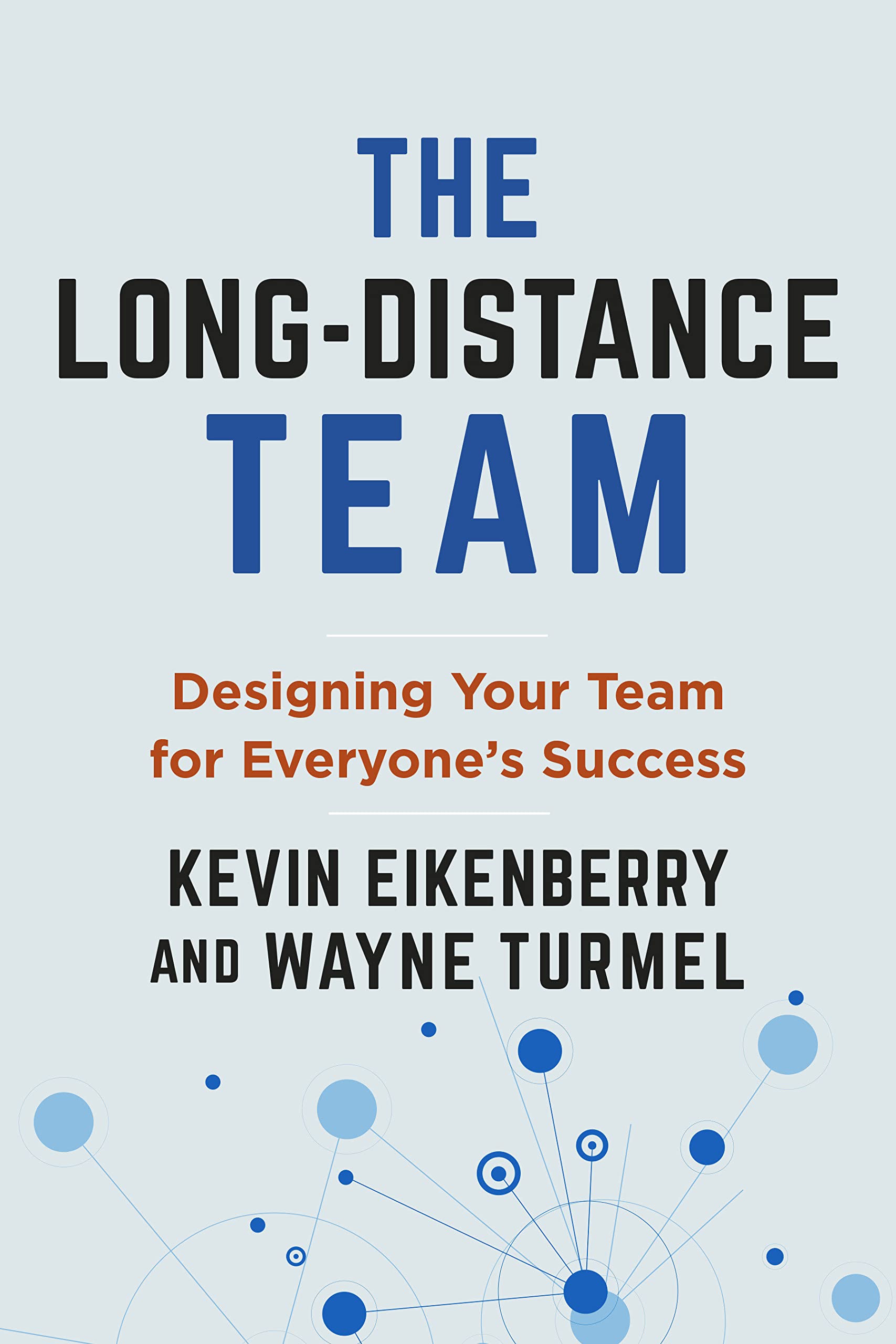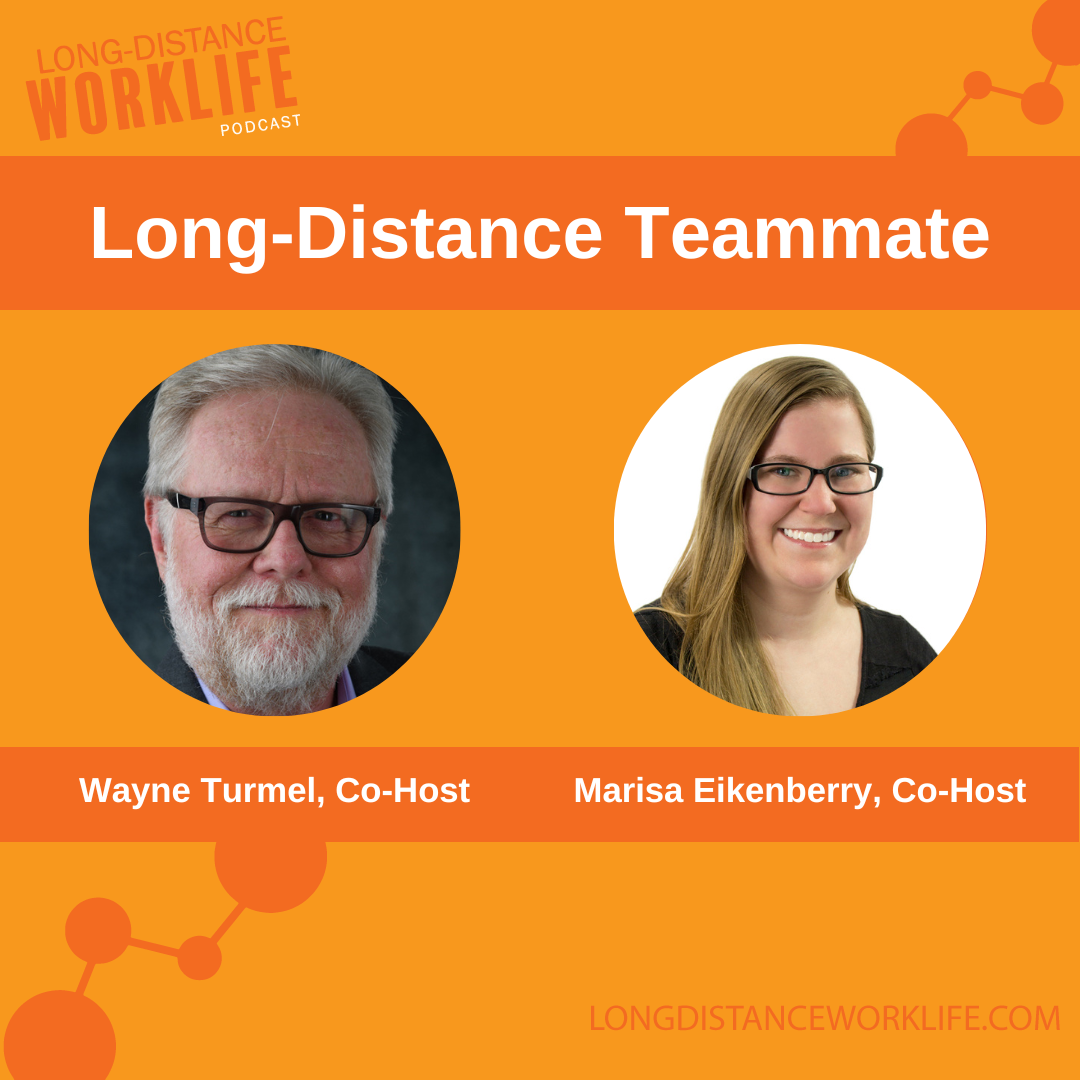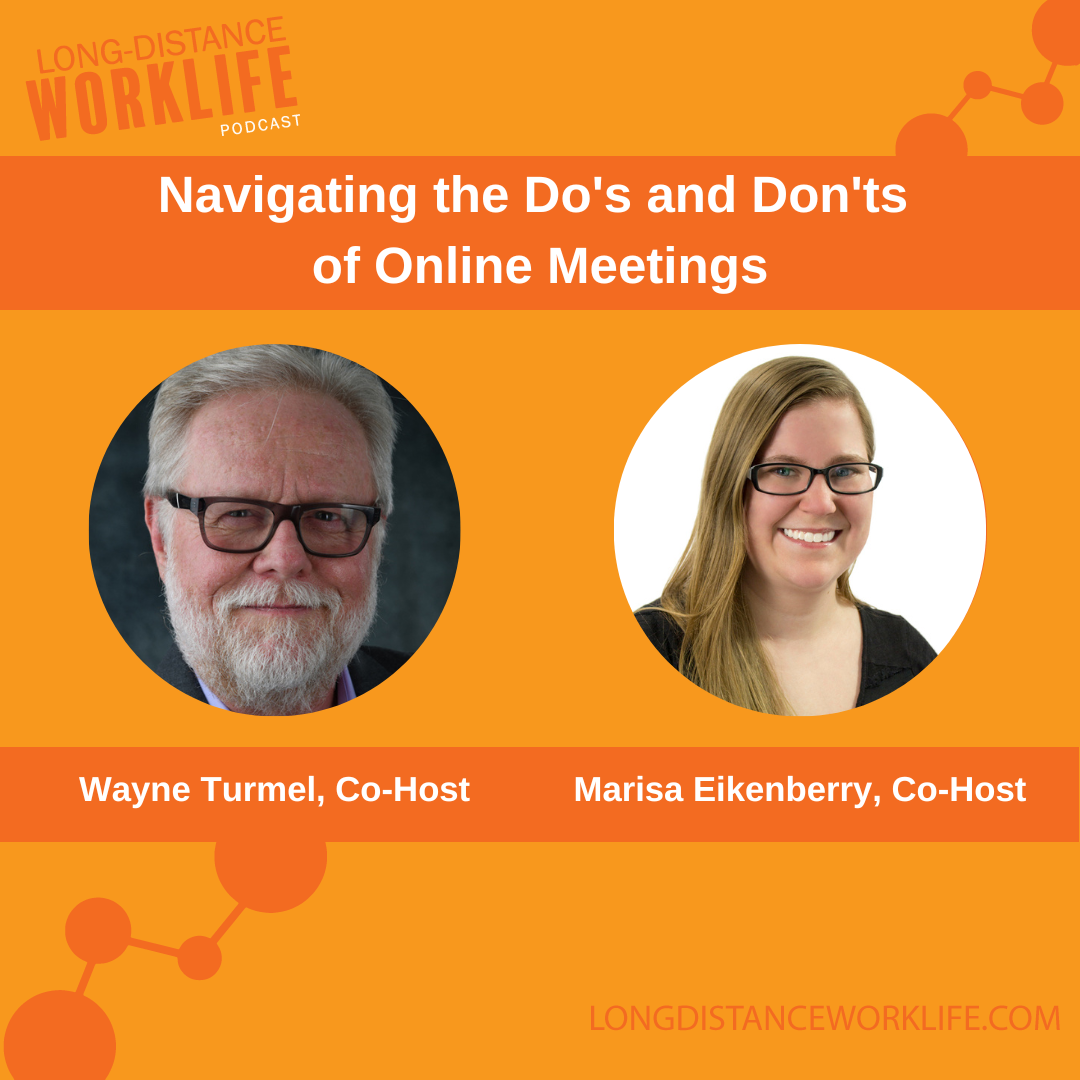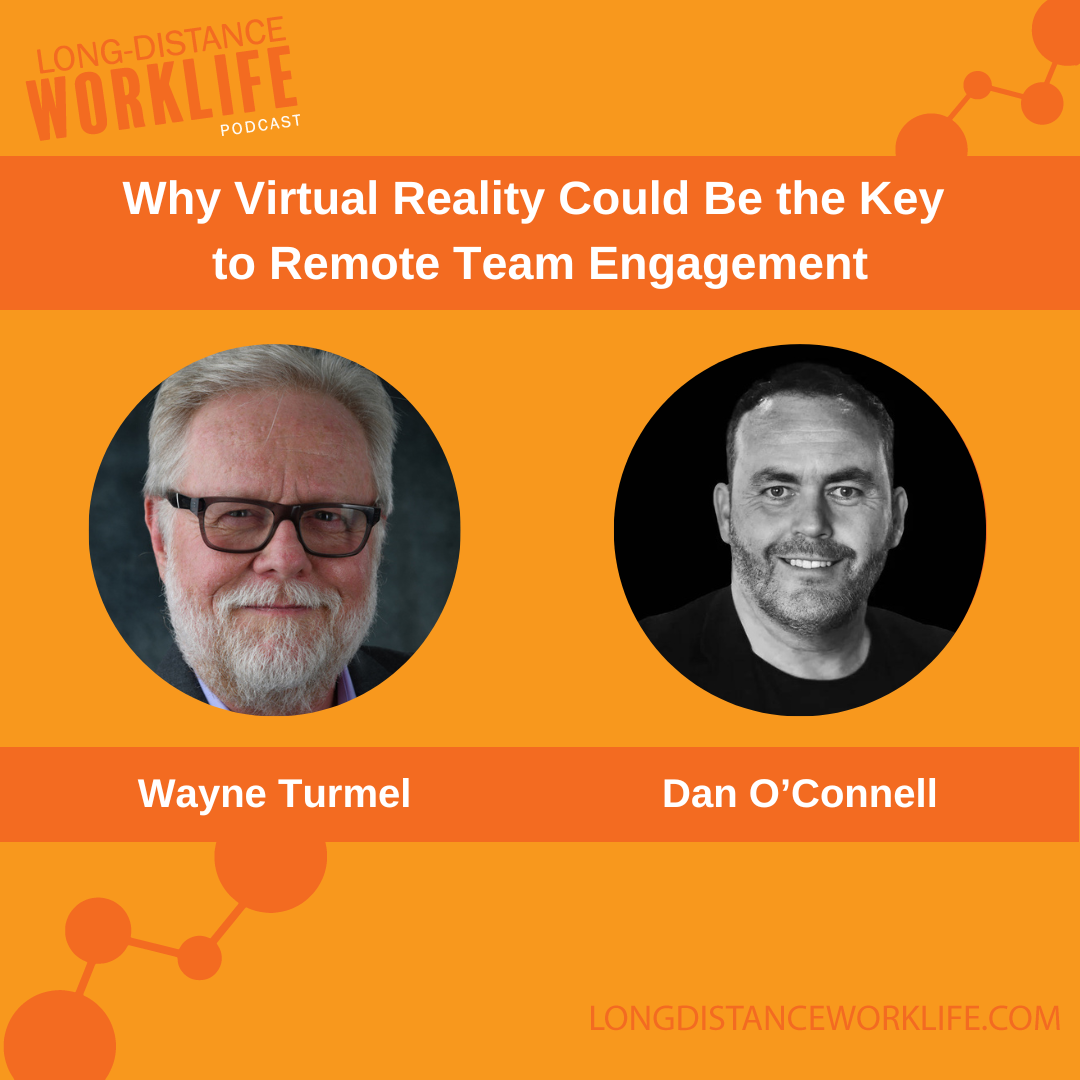Taylor Harrington, Head of Community at Groove, joins Wayne Turmel to discuss the concept of co-working and how it can be applied in both physical and online spaces. They explore the benefits of co-working, such as accountability, social connection, and the opportunity to meet new people. Taylor explains how Groove facilitates online co-working sessions, matching individuals with similar interests and goals. She emphasizes the importance of transparency and vulnerability in building meaningful connections. Taylor also highlights the value of physical co-working spaces in providing a change of environment and fostering community.
Key Takeaways
1. Co-working provides accountability, social connection, and a sense of community for remote workers.
2. Groove offers online co-working sessions, matching individuals with similar interests and goals.
3. Transparency and vulnerability are essential in building meaningful connections.
4. Physical co-working spaces provide a change of environment and opportunities for community building.
00:00:07:23 - 00:00:36:11
Speaker 1
Hi, everybody. Welcome to another edition of the Long-Distance Worklife. This is the show where we try to make sense of remote hybrid working wherever the heck you are, and in trying to make sense of it and helping us not just get through it, but to really thrive under those circumstances. My name is Wayne Turmel. I am a master trainer here at Kevin Eikenberry Group.
00:00:36:13 - 00:01:01:14
Speaker 1
If you are a regular to this show, you know that we do two types of shows. We do episodes with myself and my co-host and producer, Marisa. This is not one of those. This gives me a chance to talk to really cool people about things that are happening that you might not know about. And that's certainly the case today, is something I don't know a lot about.
00:01:01:15 - 00:01:26:08
Speaker 1
And we're talking about co-working. Not that I don't have coworkers, but the idea of co-working as third locations or alternatives to being in the office. And in order to do that, this is me bringing in Taylor Harrington. Hi, Taylor. Who the heck are you? And what the heck does Groove do That brings us to this topic.
00:01:26:10 - 00:01:50:00
Speaker 2
Amazing. Thanks so much, Wayne, for having me and for Marisa recommending that I. Come on. I'm so excited to talk about co-working. I love this topic. Clearly, I have had a co-working journey myself, having had experiences being in offices and then moving remotely and trying to find that awkward space in between and what that means. Back in college, I was in an incredible co-working space that I'm sure we will talk about more.
00:01:50:01 - 00:02:15:11
Speaker 2
And so when I heard what Groove was building, which was really this idea of taking the best parts about a physical co-working space and bringing it online so that people from all over the world could be a part of it and could co work together. I was so excited. So we do 50 minute co-working sessions in the Groove app where folks get matched up in small groups with people like them, whether it's friends or people who are relevant doing similar things.
00:02:15:13 - 00:02:39:06
Speaker 2
It's mostly people who don't have teams and just want good vibes and high fives, as we like to say, from people who understand that they're on these maybe career paths. So me as a whole, I'm living in New York City. I love hosting gatherings. I'm a party host. I love creating this feeling of what I call the opposite of loneliness, which there's not really a good word for.
00:02:39:06 - 00:02:52:23
Speaker 2
So my my life mission is to help people feel the opposite of loneliness. And I do that through gatherings online in person. And you can usually find me wandering into tiny coffee shops or bookstores.
00:02:53:01 - 00:03:23:11
Speaker 1
All right. So using very small words, because I struggle with this, I will tell you the truth, when we talk about co-working, obviously our frame of reference is the office You work in the office, people are sitting at desks next to you. There are conversations sometimes these are wonderful, enlightening social activities and very productive work things, and sometimes they are what drives us to work remotely.
00:03:23:14 - 00:03:39:03
Speaker 1
But when you talk about co-working in an app, help me out here. What does that look like and why in heaven's name, if I'm just, you know, how is this different than being on a teams meeting which is already killing us?
00:03:39:05 - 00:04:05:13
Speaker 2
Yes, I hear that. So, like I said, a lot of people that are on Groove don't have teams, so we know how good it can feel to have those coworkers and camaraderie of doing things together. And even just the accountability or the goal setting that happens with coworkers. When you say, okay, this is what we need to get done this week, and having those regular scheduled meetings or goal planning sessions, whatever that looks like inside of group, the folks that are attracted to it are people that don't have that type of structure in their day.
00:04:05:14 - 00:04:25:20
Speaker 2
So there are people who are designing their days as, let's say, a freelancer and they're wondering, okay, what time do I really need to start working? Because they've created a flexible schedule where they work for themselves. So a typical groover might hop onto the app on their phone and click start a groove, right as they've got their coffee in hand, opening up their laptop for the first time.
00:04:25:20 - 00:04:42:09
Speaker 2
And it's really that push to get into the zone to do the thing. So they might hop into one session. Like I said, it's 50 minutes. They'll be joined by three other people and get to it. And so immediately they've got this burst of social connection that there are other people around them, which is typically quite a lonely day.
00:04:42:09 - 00:05:01:11
Speaker 2
If they're by themselves as a freelancer, they might work with clients and work with other people who help them out on specific projects, but they don't have that camaraderie of going into the office or those Zoom meetings that you might have on working on a on a remote team. So that's typically the target user of something like Groove.
00:05:01:11 - 00:05:24:06
Speaker 2
There are a lot of other apps or platforms out there that are made for remote co-working, for folks that are remote coworkers. So you might hop on with your full team and it's more like a focus session where you're coming to get stuff done in a series of a certain sprint. So it's like, okay, let's get together four of our coworkers and hit the button and all co work together.
00:05:24:08 - 00:05:53:23
Speaker 2
That's a little bit different because you're not there for the discovery of meeting other people, whereas on Groove, a lot of folks are there to meet other people. They're there to find who these, as a griever calls them, chosen coworkers are because they don't have those coworkers. So there's a discovery part to it, there's a friend's part to it, inviting people that maybe you met at a conference last year and you thought they were really cool, but you didn't really know A meaningful, meaningful way to connect with them regularly and grouping together allows you to do that.
00:05:54:01 - 00:05:59:16
Speaker 1
Okay, so there are several things that you've said here that give me great angst.
00:05:59:19 - 00:06:00:12
Speaker 2
That sometimes.
00:06:00:12 - 00:06:11:10
Speaker 1
I don't think they're desirable just because I can't, for the life of me, imagine doing it. Know when you're five and you see somebody on the playground that you've never seen and you go, Oh.
00:06:11:10 - 00:06:11:22
Speaker 2
I want to.
00:06:11:22 - 00:06:40:06
Speaker 1
Be friends, okay? And off you go. As you become an adult, that becomes harder and harder to do. Right? So I guess, you know, the idea of, hey, there's a bunch of us and we all run our own little one man shops and it would be kind of cool to hang. I get that part. Talk to me about just involving complete strangers in this craziness, that process is just so foreign to my being.
00:06:40:08 - 00:06:58:00
Speaker 2
Yeah, so it's funny because it's grown over the last two years, you know, And we started our community was super tiny and it was mostly friends of the team that were doing this. And then I remember when our first groover came from the wild on Google and was like, I found you and I want to start co-working on Groove.
00:06:58:00 - 00:07:18:16
Speaker 2
And we were like, Oh my gosh, someone found us. And so obviously that's happened again and again now. And I think that that stranger danger is something that people bring up a lot when they're brand new to groove and when they're hearing about it. However, a lot of the people that join Groove and really love it have had some sort of an online experience where they are meeting strangers.
00:07:18:16 - 00:07:37:17
Speaker 2
So that's one thing that tends to be a commonality, whether it's they are someone who have done online workshops, so they've taken some sort of an online class where they were paired up with people in a Zoom room and they know what that experience is like, or they've done some sort of other focus app. Like I've mentioned before, or some sort of co-working.
00:07:37:17 - 00:08:01:21
Speaker 2
Even if it was a friend that started a Zoom Room or a mastermind and they were in a room co-working together for a certain amount of hours. So a lot of people have those experiences with within that. I think that one of the best parts about Groove is that people have really cool, transparent, wacky bios. So if you go on groove and you click on someone's bio before you happen to agree with them, you get to understand a little bit about who that human is.
00:08:01:23 - 00:08:23:19
Speaker 2
I like to say they're very anti LinkedIn. It's not like, Hi, I'm Taylor and I run this company. It's like people saying, Hey, I have a green thumb in a garden I can't stop paying attention to or I love to roller skate in my free time, or I've got three kiddos running around and my dog's name is Pudding and like, you just learn these funny things about people through these bios.
00:08:23:19 - 00:08:37:00
Speaker 2
So that starts to eliminate that, that scared nature of it. When you've started to create a culture of this is how we show up here and people showing up with that vulnerability and that transparency about who they are as full humans, not just what they do for work.
00:08:37:02 - 00:08:58:07
Speaker 1
Great. And we will have links to Groove and all of that stuff and you can check it out for yourself if you're so inclined. We will have those on. Oh dear. On the website. Long distance work like Dot. We will be doing that. So we will have that for you. What are some of the acts you mentioned a couple of things.
00:08:58:07 - 00:09:13:03
Speaker 1
You mentioned sprints and what are some of the activities that if I knew to coworking, what are a couple of the things maybe that you can do to kind of get started and get a get comfortable with that?
00:09:13:06 - 00:09:38:02
Speaker 2
Yes. So I think that one of the basic things is just the accountability in public. So even as simple as starting to say, okay, maybe you follow some really cool people on social media. So whether it's your Instagram stories or your Twitter account or threads or whatever you're on these days, if you want to start sharing publicly, hey, these are some things on my to do with that I'm getting done today and then celebrating any wins from the week publicly.
00:09:38:04 - 00:10:01:12
Speaker 2
I think that starts to help you feel that that shared social connection of putting it out there, Hey, this is what I want to get done today. People responding, reacting to it. And then at the end of the day or the end of the week, closing that loop with these are some of the things that I did this week or celebrating it so that I would say it's like a very easy way to ease into it without having to get on a camera, but starting to feel the benefits of it.
00:10:01:14 - 00:10:30:11
Speaker 2
If you do want to start doing it with someone else, I would say that the easiest way is to just do it with a friend. I even recommend two groupers that are brand new to group. Hey, if you are not interested in meeting someone new for the first time, use that little invite link and just hop into a private group with a friend so that you can experience it together because it is quite easy to get the hang of so I think that there are other platforms like that where if you are interested in this or if you want to do it with a coworker, for example, and you're like, Hey, this thing sounds interesting.
00:10:30:11 - 00:10:58:04
Speaker 2
Coworking online. There are a bunch out there where you can do it with someone that you already know. And then as you get used to just the process of it, it makes it way easier to do it with more people that you haven't met yet or have some sort of a commonality with it. But I think that that commonality and making that that transparent is one thing that I'm really looking forward to doubling down on with Groove, whether it's the fact that we both hop into a groove and I can now see that you're a podcaster and it's like right in my face, like, Hey, this person's a podcaster.
00:10:58:06 - 00:11:19:16
Speaker 2
It just breaks the ice. I think about relationships, kind of like peeling back an onion where if we had this onion of trying to get to the core of why we should connect is to humans. It's hard to do that when you have no context on that person. So if I met you on the side of the street and we were both walking in different directions and I said, Hey, I'm Taylor, you would be like, Why is a stranger talking to me?
00:11:19:21 - 00:11:37:19
Speaker 2
Versus if I was walking and I had a tote bag that had one of your favorite podcasts on it, you might say, Hey, I also listen to that show. What's your favorite episode? And we suddenly are layered deeper into that onion. And so you can take that even further and say, What if we're both standing in an elevator going to our friend's birthday party?
00:11:37:19 - 00:11:53:00
Speaker 2
And so now it's like, not only do I have that tote bag, but we both know we're going to the same place. And so you keep peeling back that onion. And I think that there's a lot of opportunity in connection in this space of remote work where we can be more transparent about helping people get through those layers.
00:11:53:03 - 00:12:08:16
Speaker 2
They can connect on something more meaningful, quicker. So that's something I'm keeping top of mind as we build group. But I'm sure that other other spaces are like that too. Even teams that are working remotely wondering how they can peel back the layers for coworkers to connect over meaningful topics.
00:12:08:18 - 00:12:51:22
Speaker 1
Yeah, one of the things and again, you know, when you know this, when you're writing or you're creating a podcast, you kind of have an avatar of who that person is, right? Yeah. But there are people who don't fit that. And in the remote workspace, this is particularly true. I mean, we think about people in companies that are working apart from each other, but there are a ton probably listening to this solopreneur or people who are loosely affiliated with others and need that social interaction and they're just not being alone with your own brain, which if you're like me, is something nobody wants for any length of time.
00:12:52:00 - 00:13:25:04
Speaker 1
You said something really early on in this conversation that I did pay attention to, and that is that you were a fan of traditional co-working spaces. And I will be honest, when we talk about remote work, most people or a lot of people at least think it's binary. You're in the office or you're working from home, but there's places and of course, anybody who saw the series on We Space, you know, is running away with their fingers crossed, you know, with nightmares.
00:13:25:06 - 00:13:42:16
Speaker 1
But these things exist and they exist for a reason. Talk to me a little bit about the advantage of working in a shared workspace with complete strangers and how you maximize that.
00:13:42:18 - 00:14:00:04
Speaker 2
Yeah, well, first off, I'll just say that sometimes getting out of the house is just a healthy thing to begin with. To have a commute to work, even if it's 10 minutes that you're walking. I live in New York City, so I could walk in any direction and be at a physical co-working space within 10 minutes. And so I think that that's that's part of it.
00:14:00:04 - 00:14:21:14
Speaker 2
I think that there are many different kinds of co-working spaces physically, and a lot of them oftentimes, people say, are quite cold. They're not really social co-working as a term. Sounds quite social. You're co-working next to people and yet you get to this big office space and you're next to someone on their laptop with their headphones in and no one's talking to you.
00:14:21:14 - 00:14:26:18
Speaker 2
And so I think there are lots of spaces like that. And in order.
00:14:26:18 - 00:14:47:01
Speaker 1
To get that's kind of been my limited experience with this is, Oh good, So you know, I can stay at home and put my earphones in and, and work or I can go somewhere else with unfamiliar physical surroundings and put my earphones in and work. I'm failing to see the benefit here.
00:14:47:06 - 00:15:20:00
Speaker 2
Yeah. I think that there are other ones that I find are more curated. They're often more expensive too, that are focused on community and helping you get to know other people in that space. So back when I was in college, I had the privilege of being able to go to one of those. I went to Penn State, which is in the middle of nowhere, Pennsylvania State College, and I went to this space called the New Initiative, and it was all focused on local entrepreneurs, which automatically, once it's a curated space for a specific kind of person, it just attracts a certain level of connection.
00:15:20:01 - 00:15:44:08
Speaker 2
But the community events that happened in that space were so well done where they brought in guest speakers. They even had salad bowl Fridays where they had folks bring in different ingredients for their salad bowl. So you could bring in carrots, you bring in lettuce, you bring in dressing and co-create a salad together. So there were just like all different things that this space did that fostered connection and foster real conversations.
00:15:44:10 - 00:16:00:22
Speaker 2
I attended an event where we had to figure out how to explain our ground truth, who we are at our core, and those types of things really allow people to open up so that when you hop into the coworking space the next day, you're not sitting next to strangers. You're having a conversation with someone who you know something meaningful about.
00:16:01:00 - 00:16:20:12
Speaker 2
So I do think that's a rare experience in the physical coworking world. But I do know there are a lot of spaces in Brooklyn, for example, that are tinier and have that. So it exists. It's just harder to find. And I think that the more narrow the spaces about who it's for, the better it can deliver on that community experience.
00:16:20:14 - 00:16:30:17
Speaker 1
And we have a number of digital nomads who listen to this. And the nice thing is that there are these places literally everywhere.
00:16:30:17 - 00:16:47:22
Speaker 2
Yes, yes. And I think that even digital nomads have such incredible resources out there. I know so many nomads from from group that have traveled to all these different places and they keep in touch with those people as they go to the next place, even if that person isn't there, because it's such a connected web of, Oh, you're going to be in Portugal.
00:16:47:22 - 00:17:08:20
Speaker 2
Let me tell you about this cool digital man I met last year, who's in Portugal right now. So I do think that even setting up in a coffee shop with a small group of people is another alternative to co work with people and make that experience special. It doesn't have to be something that you pay for. You know, you're enjoying a cup of coffee and a piece of coffee cake and you're hanging out with some good people as you get stuff done.
00:17:08:20 - 00:17:29:23
Speaker 2
And maybe even bringing a specific project, like a writing project that might take a couple of hours. So that's another alternative to do some co-working in-person. Just get out of your physical space, because I do think that that is is really healthy. And just having that connection. I mean, there's so much great research out there about how human connection throughout the day can really change your mood, but also that other person's mood.
00:17:30:01 - 00:17:54:21
Speaker 1
That's terrific. Lots to think about. Taylor, thank you so much. I'm going to wrap up the show now, but thank you. And we will have links to Groove and Taylor's LinkedIn page and all of that good stuff on the long distance work life dot com page. In the meantime, thank you for joining us. I hope you enjoyed the conversation.
00:17:55:01 - 00:18:27:20
Speaker 1
We try to judge it up a little bit and change topics constantly. And this was something that honestly I don't know a lot about being the anti social curmudgeon that I tend to be, but I will not be an anti social curmudgeon next episode because Marissa will be back. And if you have questions, show ideas, topics you want discussed, especially pet peeves, Marissa is constantly collecting pet peeves about remote work and and flexible and hybrid work.
00:18:27:22 - 00:18:54:21
Speaker 1
Drop us a line. Our emails are Wayne at Kevin Eikenberry icon Marissa Kevin Eikenberry dot com. LinkedIn or the show's LinkedIn page is a great way to find us. And of course if you are thinking about how should we be working and maybe rethinking how your team functions, check out my Kevin Eikenberry's new book, Long-Distance Team Designing Your Team for Everyone's Success.
00:18:54:21 - 00:19:17:13
Speaker 1
You can learn more about that at Long distance team book. Dot com If you listen to podcasts, this is the obligatory please like and subscribe. That's how people find us and we hope that you are telling your friends about us. So there you go. That's it. My name is Wayne Turmel. Thank you so much for being with us.
00:19:17:14 - 00:19:24:14
Speaker 1
Come back next week for another fun and interesting episode and don't let the weasels get you down.
Timestamps
00:00 Introduction to the show and topic of co-working
01:26 Groove app provides online co-working sessions for freelancers
03:23 Difference between co-working on Groove and team-focused platforms
05:01 Groove attracts users who don't have coworkers and want connection
06:40 Overcoming the initial discomfort of co-working with strangers
08:58 Exploring activities and sprints to get started with co-working
09:38 Benefits of using a platform like Groove for remote work
10:01 Ease into remote work by sharing goals and achievements online
10:30 Start using Groove with a friend or coworker
11:19 Importance of commonality and transparency in remote work connections
12:08 The challenge of connecting with coworkers in remote teams
13:42 The advantage of working in a curated co-working space
14:47 The struggle of finding meaningful connections in physical co-working spaces
16:30 The availability of co-working spaces for digital nomads
17:08 Alternatives to physical co-working spaces, like coffee shops
18:27 Ways to connect and provide feedback to the podcast hosts
Related Episodes
Featured Guest

Name: Taylor Harrington
What She Does: Head of Community at Groove
About: Taylor Harrington is the Head of Community at Groove, an app that brings the concept of co-working online. She is passionate about creating connections and helping people feel a sense of community, both online and in-person. Taylor has experience in physical co-working spaces and understands the value they bring to remote workers.
Additional Resources
Order The Long-Distance Team
Remote leadership experts, Kevin Eikenberry and Wayne Turmel, help leaders navigate the new world of remote and hybrid teams to design the culture they desire for their teams and organizations in their new book!




